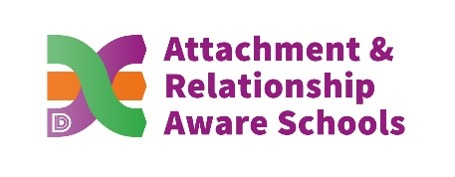Online Safety
Online Safety is and important matter.
Read this page for some tips to help keep your child safe while they are using devices.
There's a jargon-busting section to explain some of the terms you might see, read and hear about.
Using the internet to connect with others is an important part of most people's lives now. At Swanwick Primary School, we are commited to our children's online safety. This includes keeping them safe while using school's online devices and teaching them how to keep themselves safe while using their own devices at home.
At Home
It’s important to remember that the legal age to have an account on most social media – Instagram, Facebook, Youtube, Snapchat – is 13 years old.
As a parent you’ll know how important the internet is to children – they use it to learn, play, socialise and express themselves. It’s a highly creative place of amazing opportunities. But the technology children use every day can seem a bit daunting and you might worry about the risks your child can face online – such as bullying, contact from strangers or the possibility of them seeing illegal or inappropriate content.
You can engage with your children regarding their use of the internet while at home. Here are some conversation starter ideas from www.childnet.com
- Ask your children to tell you about the sites they like to visit and what they enjoy doing online.
- Ask them about how they stay safe online. What tips do they have for you, and where did they learn them? What is OK and not OK to share?
- Ask them if they know where to go for help, where to find the safety advice, privacy settings and how to report or block on the services they use.
- Encourage them to help. Perhaps they can show you how to do something better online or they might have a friend who would benefit from their help and support.
- Think about how you use the internet as a family. What could you do to get more out of the internet together and further enjoy your lives online.
ONLINE SAFETY NEWS: Poppy's PlaytimeA quick heads- up about this app, as there have been reports of children under 7 playing on it at home. There is no published age limit to the game, howevere it is horror-based, and we believe that most of the younger audience would find the imagery very frightening. |
ONLINE SAFETY NEWS: Squid GameThis is a netflix TV show and is definitely not appropriate for children due to its adult themes and graphic violence. We doubt our children are watching this on TV; it is easier for parents to monitor their viewing through this route, however clips from the show are increasingly available on streaming platforms such as TikTok. Some of our children have said that they use streaming devices, so we are alerting you to this to help keep your child safe while online. If you need advice, please contact the school and the team will be happy to talk you through secruing your devices. |
Reducing Risks
Here are some tips to help you reduce the risk to your child's safety while they are using an online device;
- Make sure that parental controls are set appropriatly. You can use these to control what your children are able to do or see while they're using their devices. Although they're not a perfect solution, they can block many problems.
- Watch for behaviour changes in your child which could indicate that they are at risk from harm online, e.g. nervousness or anxiety, unwillingness to discuss online activity, becoming secretive or withdrawn, etc.
- Monitor your child’s activities while they are using any online device.
- When children are searching the internet, use filtered search engines like Kiddle.
- Check for age ratings on games and apps which they are using. Just like with movies, 18+ ratings are there for good reason!
- Have open conversations with your child about the risks with online devices.
- Ensure that your child knows what to do if something unwanted happens while they are online, e.g. using the 'Report' button, and speaking to a trusted adult about it. Remind them that they won't get into trouble for speaking out, and that they have to keep themselves safe.
Reducing Risk in School
At Swanwick Primary School, we are committed to our children's online safety. This includes keeping them safe while using school's online devices and teaching them how to keep themselves safe while using their own devices outside of school. Here are some of the steps we take:
- School's internet service is heavily filtered by our Internet Service Provider.
- We have a current Online Safety Policy
- When teaching Computing, our staff include online safety as part of the curriculum.
- We run assemblies which give children opportunities to learn about and discuss online safety issues. All children are aware that if they are worried about anything, they can speak to any adult in school and are always welcome to have a chat with Miss Fogg-our Headteacher or Mr Cartwright-our Computing Lead.
Jargon-Busting
|
Screen addiction It can be challenging for parents and carers to know whether children are spending too much time on their devices. Furthermore, it's even more of a challenge to know whether a child is addicted to social media. Read the guide for information on what is known as 'screen addiction'. |
 |
|
Live streaming Live streaming is the term used to describe the broadcast of a real-time video from a mobile device, tablet or games console. Live streaming opens up a world of excitement for children, where they can watch live concerts, celebrities, and connect with their friends. The 'stream' can go both ways, and there are apps which enable children to broadcast their own live streams. There are many positives to this technology, but there are dangers with it, too. Click the PDF to see the guide. |
 |
|
Age ratings If you have children, it is understandable to have concerns about the films and TV shows they watch, as well as the games they play. In this guide, we take a look at the two official ways you can assess whether a particular title is suitable for your child. |
 |
|
Age-inappropriate content (accidental) 'Inappropriate' means different things to different people. What's acceptable for one age group may be unsuitable for a younger audience. Online, young people can chance upon inappropriate content in various ways. The guide on the right explores how this can happen, and provides tips to help keep children safe. |
 |
|
Online bullying Going online makes it easier for people to say and do things they probably wouldn't do face to face. Online bullies don't get to see their victims' reactions in real life, so this can cocoon them from the real damage that they are doing. The poster on the right contains some useful information to share with your child. |
 |
|
Grooming Grooming is when someone befriends and builds an emotional connection with a child to gain their trust for the purposes of sexual abuse or exploitation. They can do this both offline and online, with technology and the internet being commonly used to initiate and facilitate contact with a child. See the guide on the right for more information. |
 |
|
Trolling A 'troll' is described as somebody who deliberately posts negative or offensive comments online against others. A troll will ultimately post something offensive to provoke an individual for a reaction. See the poster for more information. |
 |
|
Sexting Also known as 'Youth Produced Sexual Imagery', sexting involves sending and receiving explicit messages, images or videos of a sexual nature. This content is usually uploaded on a mobile device, which can then be uploaded onto social networking sites and shared further. This is more common in adolescents, but younger children can become involved in this as well. The PDF on the right has more information and you can visit Childnet's sexting advice page for more information. |
 |
|
Catfishing In this technological era, making friends online and communicating with them are normal parts of life. Unfortunately, there are people out there who may try to exploit your trust. Catfishing is when someone creates a fake online profile to trick people into thinking they are somebody else. For more information, read this guide. |
 |
|
Online challenges Online or 'viral' challenges (as they are sometimes known) are constantly emerging and evolving. They're often completely innocent, raising awareness of worthy causes or simply providing amusement. However, they can have more sinister undertones, putting children at risk. More information in the PDF on the right. |
 |
|
Loot boxes and skin betting Loot is anything in a game which gives the player an advantage, e.g. a weapon or special ability. A skin is a change of appearance for the player's character. Real-world currency can be used to buy loot and skins. Use of this "loot and skin" currency can be taken further by websites that use it for gambling. It’s important for parents to be aware of this activity, as it can consume considerable amounts of money and can become addictive. See the guide for more info. |
 |
|
App stores 'Apps' are designed to run on certain devices and are written for a specific operating system, such as Apple iOS, Windows, or Android. 'App stores' are essentially shop-fronts from where people can download free or paid-for apps. There are some tips in the leaflet to help you moderate and manage your children's use of an app store. |
 |
|
Children's devices Children are using smart devices from a much younger age than ever before, so it's essential that we talk to them about how to use them safely. There are many positive benefits to this new technology - however there are plenty of downsides too. See some tips in the leaflet on the right to help you take steps to protect your family against these risks. |
 |
|
Home devices As new smart devices arrive on the market, they promise to make life easier and to help our lives run more efficiently. While they are typically aimed at busy professionals, they can easily be used by children, too. See the guide on the right for more information about internet-connected devices. |
 |
|
VPN A Virtual Private Network (VPN) is a privacy tool used to hide internet activity from prying eyes. With a VPN, a secure tunnel is created between your computer or phone and the other end of the connection. VPNs have many legitimate uses, but they can also be used to bypass protections, e.g. parental controls. See more information in the PDF on the right. |
 |
Here at Swanwick Primary School, we love computers and computer games. They can be great learning experiences, as well as a lot of fun! This is, of course, as long as children are kept safe online. National Online Safety, a great organisation dedicated to online safety, has published the following guides. We hope you find these helpful.





